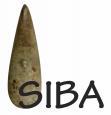Project Team
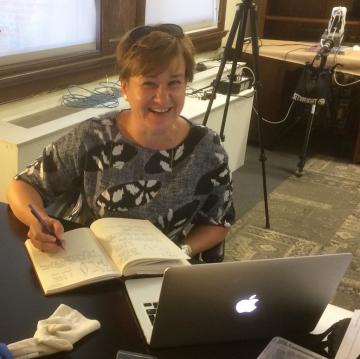
Joanna Ostapkowicz
My interest in Bahamian/TCI pre-colonial material culture goes back to the 1990s, when work towards my PhD enabled a study of a remarkable group of duhos (or ceremonial chairs) from the region. I still consider these exceptional carvings – housed in the collections of the national museums of The Bahamas, Turks and Caicos and the US – to be the pinnacle of duho artistry from the Caribbean region. I returned to Lucayan wood carvings in 2007-2010, when a Getty Foundation grant enabled a detailed study of the material, manufacture techniques and chronology of a large collection of Caribbean wood sculpture. As part of SIBA, my focus has now shifted to inorganic material culture: stone ‘exotics’ that were exchanged and/or brought directly into The Bahamas/TCI archipelago. In my role as PI, I am documenting these collections in detail, ranging from their morphology and iconography to their context and collection histories. Together with colleagues from Vrije Universiteit (Amsterdam), University of Granada and University of Oxford – who bring a wide variety of analytical techniques and expertise to the project – we aim to more concretely define the material culture of the region, and the networks that linked it to the wider circum-Caribbean.
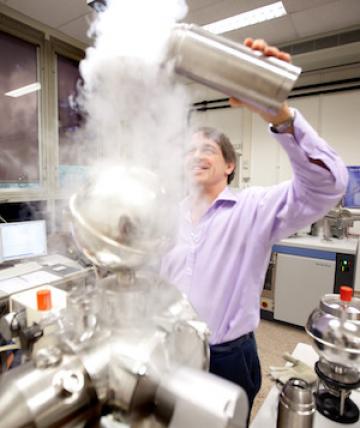
Gareth Davies
Co-I Gareth R Davies leads the petrology and geochemistry research aspects of SIBA from the Vrije Universiteit, Amsterdam (VUA) where he has built up a geochemical and isotope provenance group over the last decade. The VUA team has developed a series of state-of-the-art techniques in collaboration with industry (Thermo Fisher) and university partners (ETH Zurich) to produce a portable laser ablation sampling instrument and the ultra-sensitive mass spectrometry techniques that allow the analysis of small samples. These developments now allow sampling of artefacts without producing visual damage. The VU team has also been developing new techniques for application to provenance questions in forensic science with the ultimate aim of applying validated techniques to archaeology and food safety studies.
The VU team has been working on Caribbean archaeology together with colleagues at the University of Leiden over the last decade. Together they have made major progress in understanding human migration prior to colonialization and the impact following the arrival of Columbus (https://www.universiteitleiden.nl/nexus1492). Most recently integration of geological and geochemistry with machine learning techniques has been used to pioneer improved methods to interpret regional isotope data (isoscapes). Our role in SIBA is part of the drive to apply provenance techniques to the circulation of lithic artefacts and hence produce a better understanding of the significance of the material culture of individual artefacts and their role in local and regional networks.
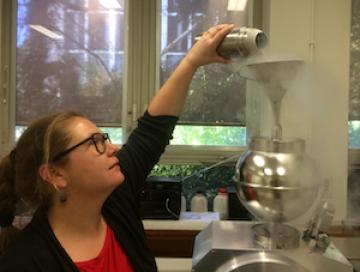
Alice Carolin Susanne Knaf
I’m a PhD researcher at the Geology and Geochemistry Department at the Vrije Universiteit (VU) Amsterdam.Within the AHRC funded SIBA project my research focuses on the provenance of precolonial Bahamian jadeite and omphacite jade artefacts, like celts and adornments. Lithic studies can provide information ranging from collecting and processing the raw material into finished products, to pre-colonial artefact distribution and trade. The project involves research trips to museums in the United States and the Caribbean. The aim is to examine and sample Bahamian lithic collections with the use of a prototype portable laser ablation sampling device designed to sample museum artefacts in a macroscopically non-invasive way. The laser ablation device leaves ablation pits of about 100 μm in width and depth (the thickness of one human hair). The ablation process creates small aerosols which are transported by an ambient air stream via a tubing connection onto a clean and inert filter. Filters are returned back to the VU Amsterdam for further trace elemental and multi-isotopic (Sr-Nd) analysis. This cutting-edge provenancing technique enables us to link the geochemical fingerprint of lithic artefacts to Caribbean source rocks.
See a recent presentation on the project at the 25th (2019) Annual Meeting of the European Association of Archaeologists, Bern, Switzerland.
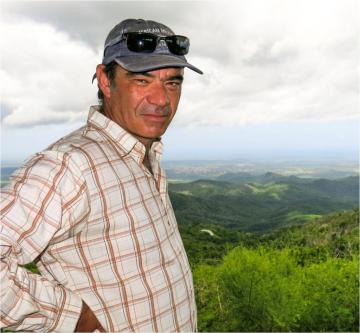
Antonio García Casco
My scientific profile is dominated by metamorphic petrology. I have a sound knowledge of the petrological composition of the Greater Antilles, northern South America and Central America, where I have developed much of my research. I have also been involved in the study of archaeological lithics in the Caribbean for some time, including collaboration with archaeologists and petrologists of Puerto Rico, Cuba, Dominican Republic, The Bahamas, Colombia, Panamá and Costa Rica, as well as George Harlow (American Museum of Natural History) and the Leiden researchers led by Corinne Hofman. Though focussed on jade, I have studied/discovered other lithics including, for example, variscite (first description in Colombia, Venezuelan source) and glauconite (first description in Panamá, local source). My involvement with SIBA provides an opportunity to carry forward these established interests through the study of artefacts now in museum collections, with the aim of enhancing information about Bahamian indigenous exchange networks.
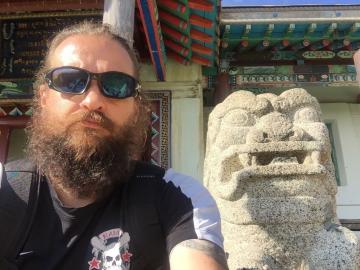
John Pouncett
I am the Spatial Technology Officer for the School of Archaeology at the University of Oxford and have a long-standing interest in GIS, spatial analysis and landscape archaeology. My involvement in the Stone interchanges in the Bahama archipelago project builds on recent work on the spatial modelling of isotope data I have carried out as part of research projects on the Caribbean (Pitch Lake, Trinidad and The Bahamas/Turks and Caicos Islands) and beyond (Northern Ireland and prehistoric Britain). I will be using spatial approaches to assignment to determine the most likely sources of the raw materials used in the manufacture of Lucayan stone artefacts.
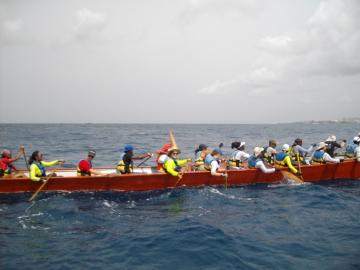
Emma Slayton
While working on my PhD dissertation at the University of Leiden, I applied least cost pathway analysis techniques to the study of pre-Columbian canoeing through the islands of the Lesser Antilles in the Caribbean Sea. By generating least cost canoe routes, I evaluated relationships between archaeological site assemblages based on the exchange of materials or the presence of specific cultural stylistic elements. For the SIBA project, I will be applying this technique to hypothesize the structure of canoe routes between islands in and around The Bahamas, a topic I explored briefly in 2013 with Joanna Ostapkowicz and John Pouncett. Based on the time cost of paddling, the results will be used to suggest the process of settling The Bahamas, the layout of maintaining connections between islands, and which island communities were in contact with one another. Simultaneously, the trajectories of the canoe routes can indicate any areas of easy access and suggest prominent waypoints or entrance zones for Amerindians traveling through The Bahamas.
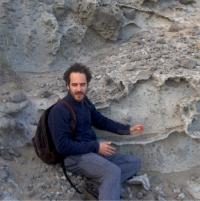
Juan Cárdenas Párraga
I have been involved in jadeitite and associated rocks research since my MSc and PhD studies, mostly Sierra del Convento mélange (Eastern of Cuba). I have approached topics such as the origin and evolution of this rock assemblage using electron microscopy, geochemistry and geochronology and have established the petrological and tectonic evolution of this mélange. I have specific interest in the P-T-t path and fluid-rock interactions and metasomatism involved in the formation and evolution of jadeitite rock, and metamorphism of associated rocks in subduction mélanges. My goal in the SIBA project is focused on the application of metamorphic petrology tools to discriminate possible sources of extraction of archaeological artifacts in the Caribbean context.
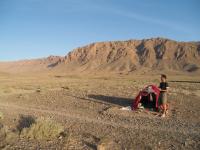
José Antonio Lozano
My doctoral thesis (2018) was about eclogitic ophiolitic rock of the Betic Cordilleras and their use for polished tools that circulated on the Iberian Peninsula during prehistoric times, for which I offered the first evidence. My scientific profile is therefore dominated by petrology and geochemistry with special interest in geo-archaeological investigation. Among other activities, I have examined a collection of archaeological rock crystal artefacts recently found at Valencina de la Concepcion (Seville, Spain), one of the largest 3rd millenium BC sites in Western Europe, with the most technically sophisticated and aesthetically impressive collection of rock crystal material ever found in Prehistoric Iberia. I have also worked in geo-archaeological characterisation and provenance of metaliths, the petrological characterisation of an epigraphic stela (the earliest monumental script in Ibera) and the circulation of archaeological pieces of flint from the Recent Prehistory in the Iberian Peninsula, where I determined for the first time the origin of prase quartz as well as archaeological pieces made of fibrolite, marble, ophite, amphibolite and actinolitite. My participation in the SIBA project will contribute to buuilding geoarchaeological information about exotic jade materials in The Bahamas.
SaveSave

